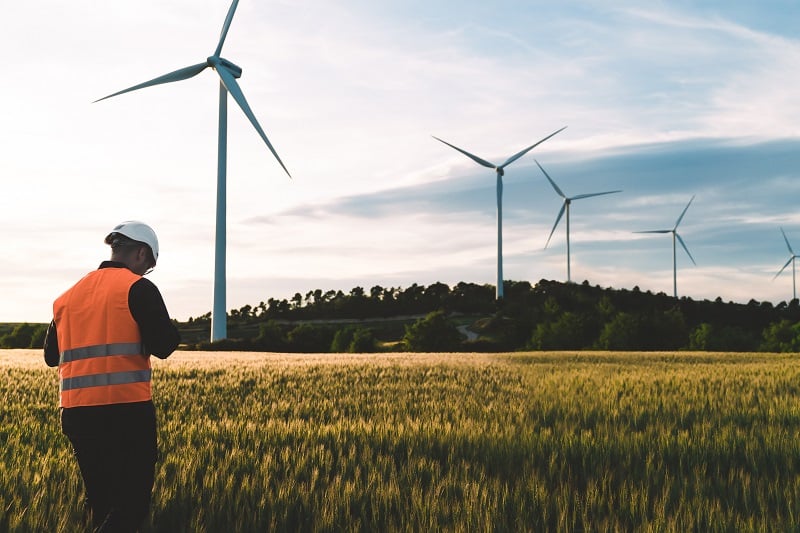
Emily Murrell
Policy Programme Director
Setting an ambitious 90% by 2040 emissions reduction target, with the right supporting policies in place, can be a boost for the pioneering EU Green Deal. We outline the key considerations for investors as European Parliamentary elections approach.
On 6 February, the European Commission published its ‘Impact Assessment Report’ on Europe’s 2040 greenhouse gas emissions reductions target, confirming its support for a 90% net greenhouse gas (GHG) emissions reduction target for 2040 compared to 1990 levels.
This recommendation aligns with the latest recommendation from the European Scientific Advisory Board on Climate Change (ESABCC), which called for a science-based target of 90-95% emissions reductions. We voiced our support for this ambition when it was first announced in 2023. The target will now go to vote, with those results informing the final decision of the next mandate from June 2024, though the recommendations of this assessment represent one of the most influential stages of the process.
This ambition can bolster the European Green Deal at a time when climate policymakers face challenging geopolitical and economic headwinds. The deal needs to firm up its agenda for sustainable industry, global competitiveness, and scaled-up investment in the coming years to overcome these challenges and, crucially, maintain as much member-state support as possible.
Overall lower cost
The European Commission analysed three proposed targets: a reduction of 80%, 85-90%, and 90-95%. The 90-95% range most closely aligns with the EU’s existing net zero by 2050 trajectory and complies with its calculated emissions budget, as well as the ESABCC recommendations.
High global warming could lower EU GDP by 7% by the end of the century.
It also concluded that the most ambitious target would lead to an overall lower cost to the EU between 2030 and 2050, considering estimates that high global warming could lower EU GDP by 7% by the end of the century. This risk was balanced against the investment gap of EUR 1.5 trillion per year required for the EU to meet net zero.
Fundamental to this is the successful implementation of the EU’s 2030 climate target of 55% emissions reductions - ‘fit for 55’. With seven years to go, implementing national energy and climate plans to secure, or better still exceed, this target will be a key issue for the next EU mandate.
Decarbonising the EU’s energy system will be vital to achieving this ambition, building on the Green Deal ‘energy efficiency first principle’ of maximising efficiency and minimising waste. This urgency was called into focus by the ESABCC and the Commission reiterates it in the assessment; resilient and decarbonised energy systems are vital to reaching any 2040 target.
Energy and industry
Near-complete decarbonisation of electricity between 2030 and 2040 will be essential. The key elements of achieving this include rolling out renewables and low-carbon solutions; energy efficiency and buildings; electrification and expansion of the EU’s power grids; and a reduction in the consumption of fossil fuels by 80% compared to 1990 levels.
EU investment in clean energy must rise to €530 billion a year by 2030 (IEA).
Private finance will be asked to fund much of this decarbonisation, but plans remain very much a ‘work in progress’. The International Energy Agency has estimated that EU investment in clean energy must rise to €530 billion a year by 2030. To meet and maintain these financial flows, investors need the EU to focus heavily on industrial policy and competitiveness at a regional and international level. For instance, plugging existing policy gaps which hinder the scaling up of clean technology manufacturing should be a top priority.
The EU also aims to develop carbon capture utilisation and storage (CCUS) technology, targeting 50 million tons of CO2 injection capacity by 2030 and 200 million tons by 2040. The Commission’s assessment recognises the importance of targeted CCUS, focused on hard-to-abate sectors where alternatives are less economically viable.
However, its Industrial Carbon Management Strategy, also published on 6 February, warns of a EUR 10 billion investment gap per year in the technology between now and 2030 which must be plugged. We welcome both calls for clear regulatory packages that accurately assess investment needs and set the groundwork for public-private partnerships.
Favourable investment conditions
The Impact Assessment reminds us that the net zero transition will not be achieved through policy alone - The Commission, member states and industry must work together to co-create new project pipelines and finance models across key sectors of the economy. This, on top of a predictable and simplified regulatory environment, will play a key role in private finance’s assessments of climate transition risks, in turn creating favourable investment conditions for net zero solutions.
On the world stage, intense global competition cannot be ignored and should be an incentive for the EU to move faster to decarbonise. A strong 2040 target set by the incoming mandate would send a clear message to the international community and reiterate Europe’s position as a global climate leader.
If you’d like to take part in our working groups and be the first to see our policy insights and analysis, why not contact us today to find out more about becoming a part of IIGCC.